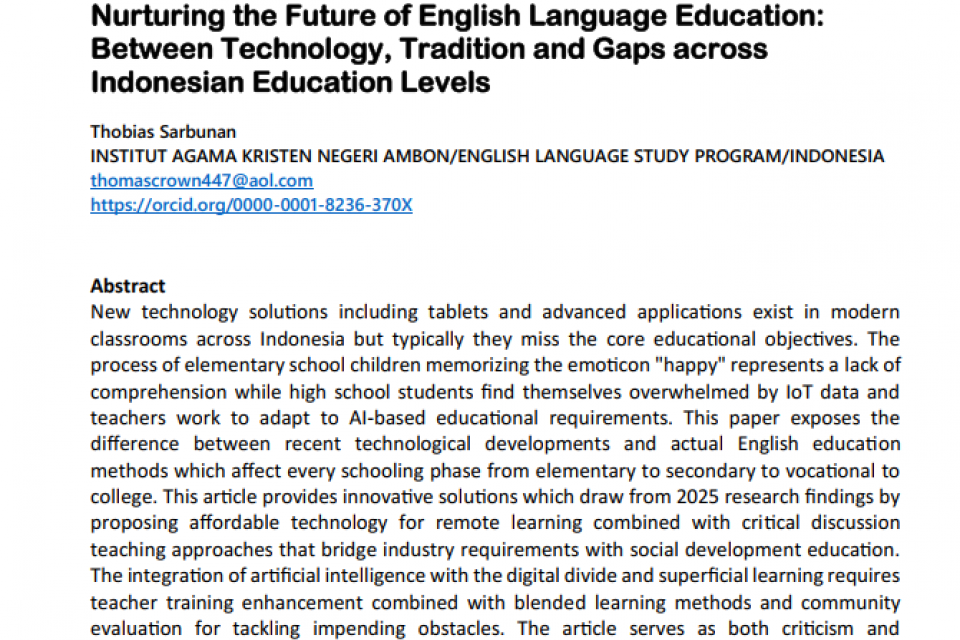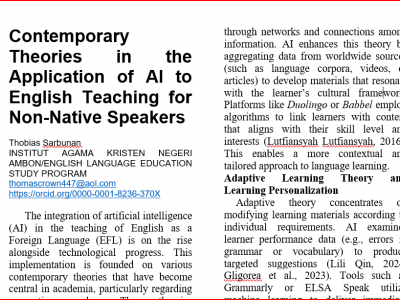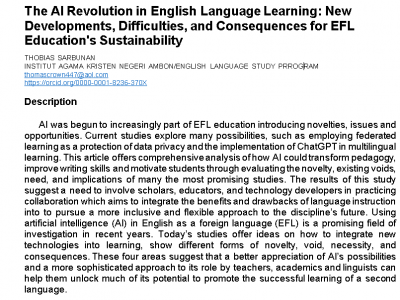Datasets
Standard Dataset
Nurturing the Future of English Language Education: Between Technology, Tradition and Gaps across Indonesian Education Levels
- Citation Author(s):
- Submitted by:
- Thobias Sarbunan
- Last updated:
- Sat, 02/22/2025 - 08:36
- DOI:
- 10.21227/c1pa-zm79
- Data Format:
- License:
 151 Views
151 Views- Categories:
- Keywords:
Abstract
New technology solutions including tablets and advanced applications exist in modern classrooms across Indonesia but typically they miss the core educational objectives. The process of elementary school children memorizing the emoticon "happy" represents a lack of comprehension while high school students find themselves overwhelmed by IoT data and teachers work to adapt to AI-based educational requirements. This paper exposes the difference between recent technological developments and actual English education methods which affect every schooling phase from elementary to secondary to vocational to college. This article provides innovative solutions which draw from 2025 research findings by proposing affordable technology for remote learning combined with critical discussion teaching approaches that bridge industry requirements with social development education. The integration of artificial intelligence with the digital divide and superficial learning requires teacher training enhancement combined with blended learning methods and community evaluation for tackling impending obstacles. The article serves as both criticism and educational framework which guides teachers toward developing human and sustainable learning practices that utilize technology properly.
à‚This article provides innovative solutions which draw from 2025 research findings by proposing affordable technology for remote learning combined with critical discussion teaching approaches that bridge industry requirements with social development education. The integration of artificial intelligence with the digital divide and superficial learning requires teacher training enhancement combined with blended learning methods and community evaluation for tackling impending obstacles. The article serves as both criticism and educational framework which guides teachers toward developing human and sustainable learning practices that utilize technology properly‡Ç









